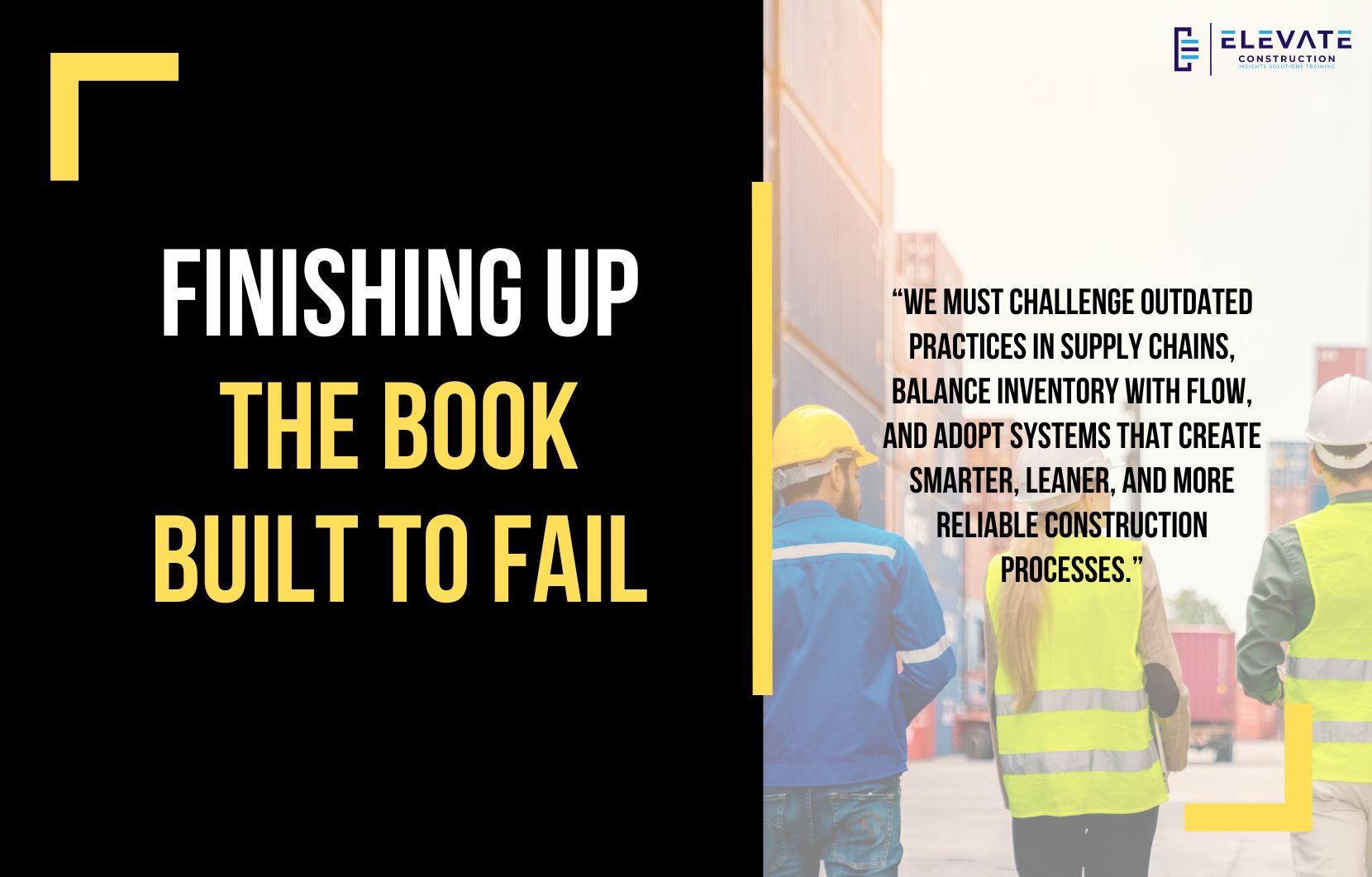Lessons from Built to Fail and the Future of Construction
I recently wrapped up reading Built to Fail and wanted to share some closing thoughts. The book is fantastic, especially in the first chapters, which are so coherent and well-structured that we’ve already created presentations from them and are weaving the concepts into our future books. While the end of the book feels a little more scattered, it still contains powerful insights worth discussing.
Before diving into that, let me say thank you. To those who subscribe to the YouTube channel, follow along here, or share feedback, I want you to know I deeply appreciate the support. Producing content takes real effort. From researching what people are searching for, outlining scripts, and writing drafts, to recording, editing, creating thumbnails, and pushing content out, it’s a full-day commitment each time. Add to that the support of my team and the ongoing growth of our company, and I cannot say enough how grateful I am for everyone who helps keep this mission moving forward.
Now, back to Built to Fail.
One of the most striking points Todd makes is about the challenge of moving work off site. Modular and prefabrication approaches are promising but incredibly complex and fraught with risk. Companies like Katerra and Westinghouse proved how difficult it can be to make modular successful at scale. While I believe modular has a future, for now, stick-built structures can still move at a pace that rivals or surpasses modular in many situations. Prefabrication options range from kits of parts to single trade or multi-trade assemblies, even to full volumetric pods. Until the modular industry matures further, pre-kitting materials into parts for efficient on-site assembly can be a strong alternative.
Another valuable lesson is about material management. Todd captures it well with a phrase that has stuck with me: do not order just in case, order just in time. This is about avoiding excess inventory that ties up cash while still protecting projects with the right-sized buffers. Ninety percent of construction professionals lean toward materials waiting on people instead of people waiting on materials. The truth lies in balance. We must manage long-lead items carefully while not flooding sites with unnecessary bulk materials or consumables.
One idea that hit me hard was his critique of long lead times. Too often, construction professionals accept extreme lead times without asking why. If it takes two years to procure certain equipment, the default response is to accept it and move on. But why should it take that long? Are suppliers inflating timelines because they have monopolies or want to profit from expedited fees? We should be questioning and challenging these norms rather than simply adjusting our schedules.
Todd also points out the problem of letting suppliers work in sequences that fit their preferences rather than what benefits the project. To succeed, we need to bring in materials by zone and phase so they can be installed just in time. This requires tighter control and collaboration with suppliers.
A recurring theme in the book is that supply chain management is not just procurement. It is about eliminating unnecessary administrative work, optimizing production resources across the value stream, forming strategic partnerships, and truly understanding the elements of lead time. Instead of relying on expediters and spreadsheets to chase materials, we should be implementing systems that control work in process and flow.
The book closes with some attributes of effective supply flow control that are worth repeating. Materials should be fabricated and delivered when needed, not so early that they require long-term storage. Resources like inventory, labor, and equipment should be optimized for the overall project, not just individual gains. Materials should always be traceable as they move through fabrication, shipping, storage, and installation. And installation itself should be final assembly only, with packaging and prep work handled off site wherever possible. Finally, projects need to stay agile, use technology wisely, and implement performance indicators to improve production systems.
These ideas may feel scattered at first glance, but together they push us toward a future where construction supply chains are leaner, smarter, and more reliable. The book reinforced for me that success in construction is about creating systems that tie everything together instead of random fixes.
I am grateful for the insights and encourage you to pick up Built to Fail if you have not yet. For me, it was a reminder that the industry must keep questioning outdated practices, experimenting with better approaches, and striving to improve flow in every area of work.
On we go.
Key Takeaway
We must challenge outdated practices in supply chains, balance inventory with flow, and adopt systems that create smarter, leaner, and more reliable construction processes.
If you want to learn more we have:
-Takt Virtual Training: (Click here)
-Check out our YouTube channel for more info: (Click here)
-Listen to the Elevate Construction podcast: (Click here)
-Check out our training programs and certifications: (Click here)
-The Takt Book: (Click here)
Discover Jason’s Expertise:
Meet Jason Schroeder, the driving force behind Elevate Construction IST. As the company’s owner and principal consultant, he’s dedicated to taking construction to new heights. With a wealth of industry experience, he’s crafted the Field Engineer Boot Camp and Superintendent Boot Camp – intensive training programs engineered to cultivate top-tier leaders capable of steering their teams towards success. Jason’s vision? To expand his training initiatives across the nation, empowering construction firms to soar to unprecedented levels of excellence.
On we go

